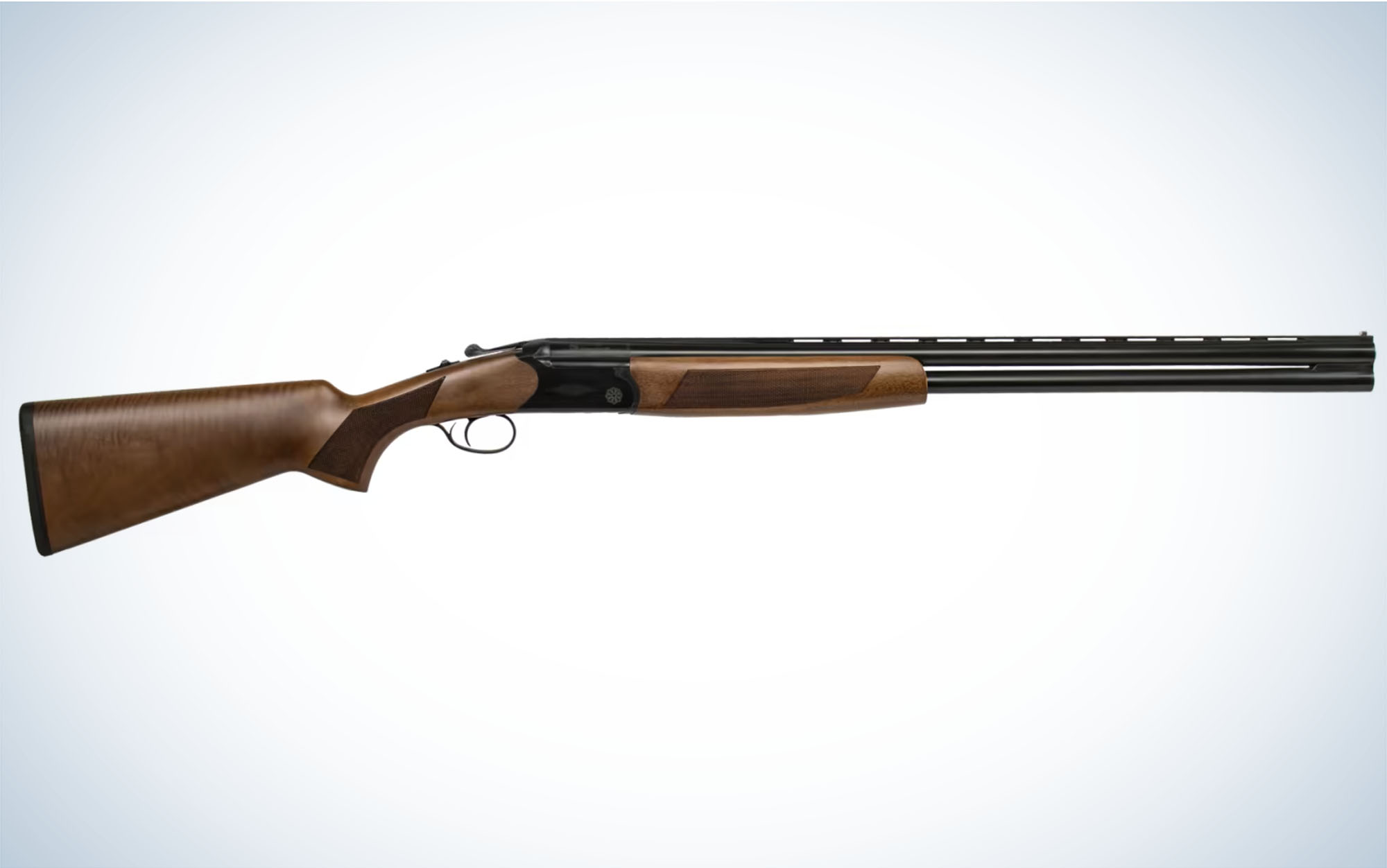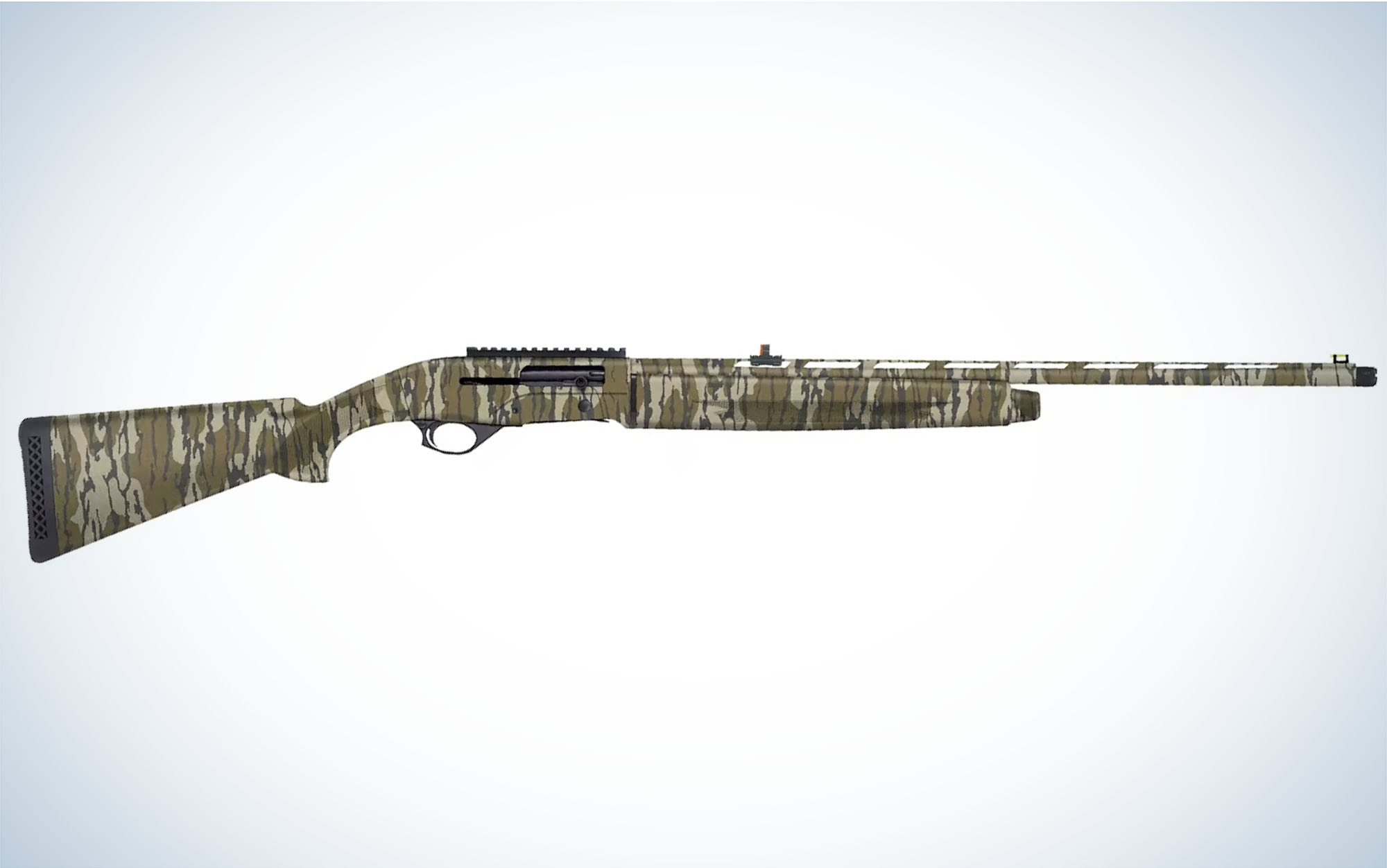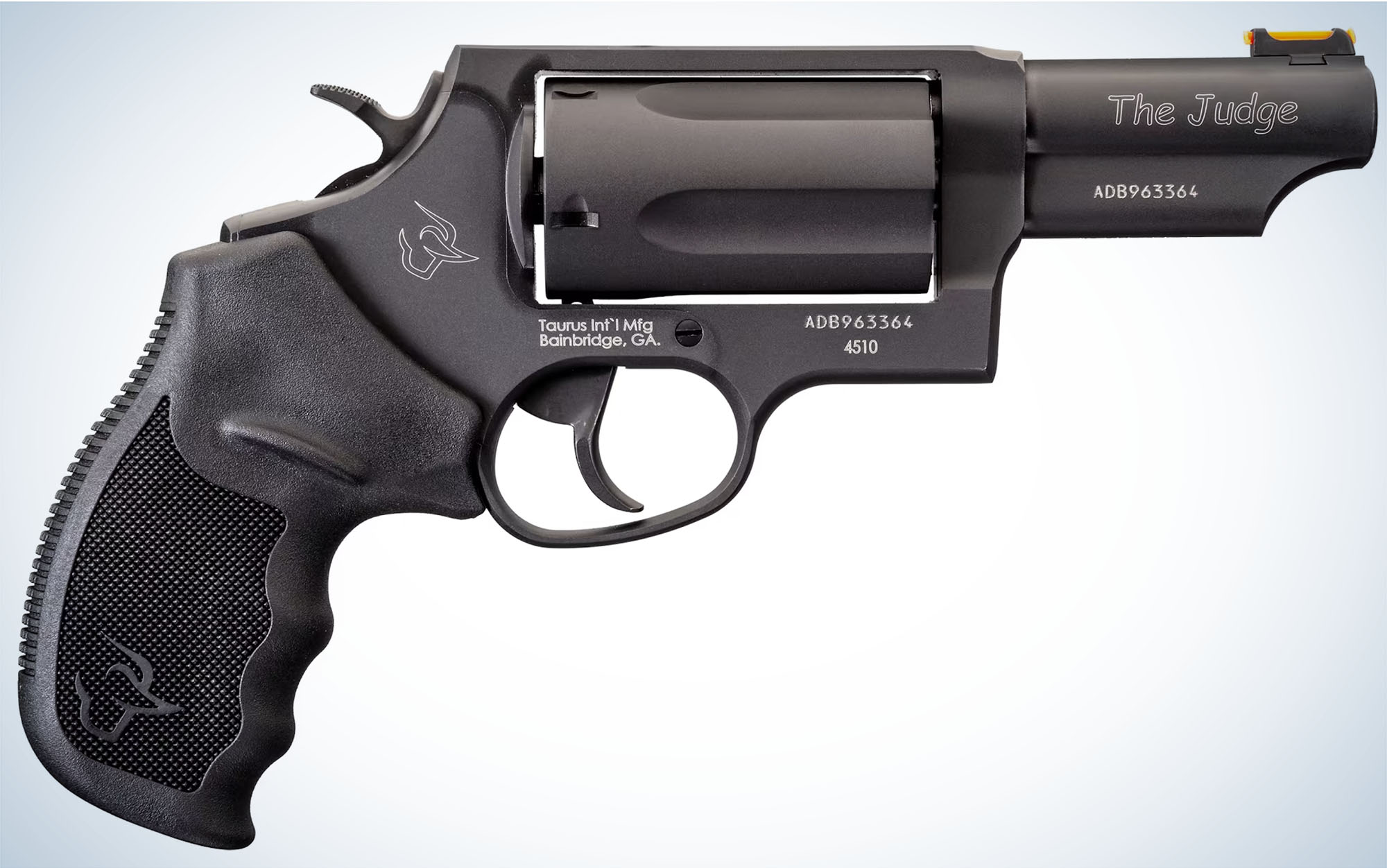Most shooters think of the .410-bore (it’s a caliber not a gauge) as a specialized shotgun. But it can actually be used for many of the same hunting pursuits and clay-target sports as the 10-, 12-, 16-, 20- or 28-gauge. You just have to remember that a .410 is the equivalent of a 67-gauge, so its payload will never be as stout as the more conventional bore diameters, which puts limitations on effective shooting distances. But the idea that a .410 shotgun can’t perform as well as the other gauges at shorter ranges is incorrect. Field & Stream shooting editor Bob Brister proved that long ago when he patterned a .410 against a 12-gauge with the same shotshell charge weight through full chokes. The results from that test revealed the .410 actually produced a more pellet dense pattern at 20 yards than the 12, though the larger bore far outperformed the .410 at 40 yards.
Americans have long embraced the .410 shotgun. And if you research some of the most popular shotguns in U.S. history—Mossberg’s 500, Remington’s 870 and 1100, Winchester’s 21 and 42, Browning’s Superposed, Citori, and BPS—they were all made available in a .410 model. The popularity of the .410 has outlasted that of the 10- and 16-gauge, and runs neck-and-neck with the 28, even though each of those larger gauges are ballistically superior. In this country, bigger is usually perceived as better, but not in this case. In fact, if you’re an American shooter, you can’t consider your gun cabinet complete without a dainty .410 in it.
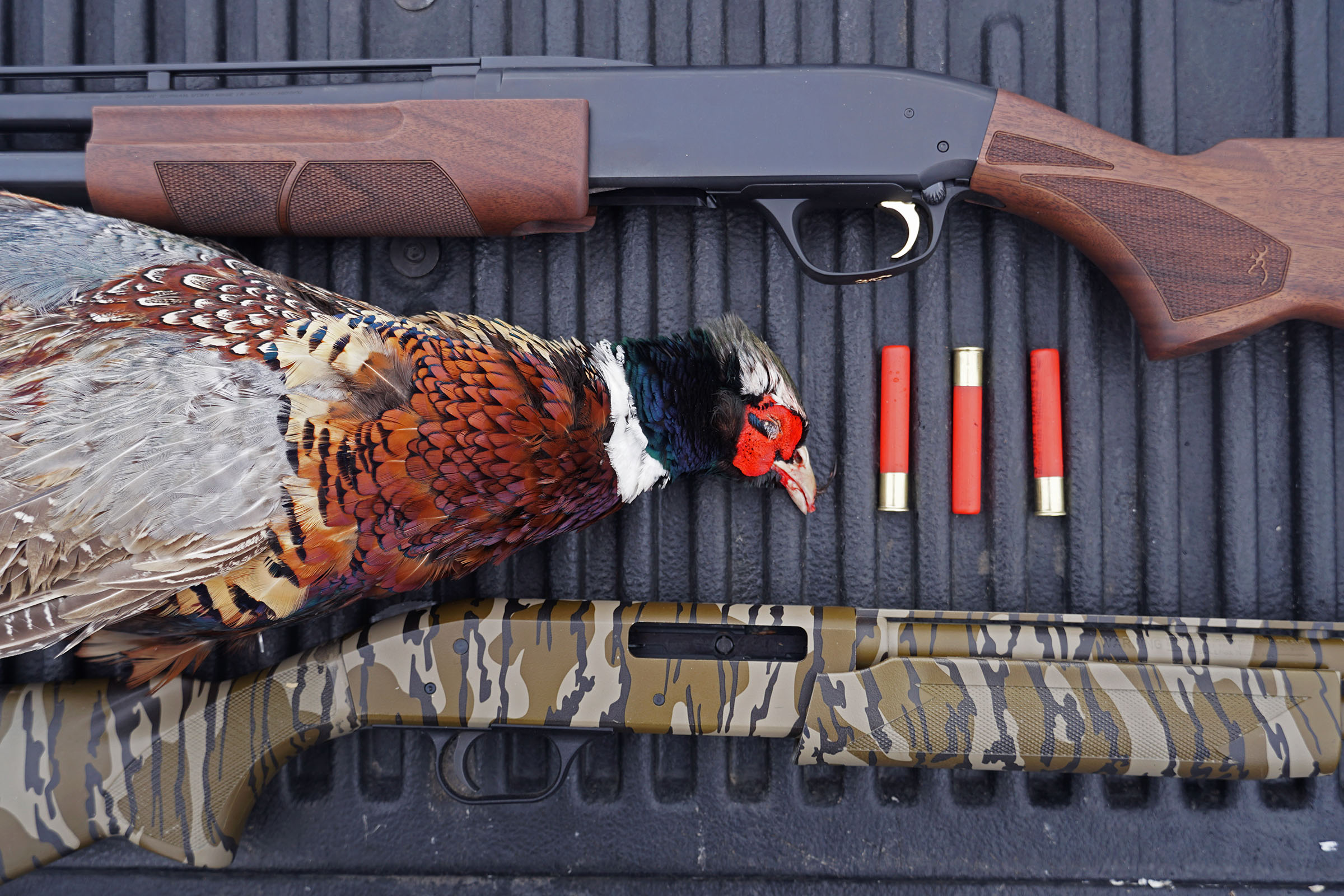
.410 Shotgun History
The origin of the .410 is linked to French and English “cane guns” of the late 19th century, though it’s not clear who specifically is responsible for inventing the caliber. According to firearms historian Ashley Hlebinski, Remington started engineering cane guns in the 1850s, but those percussion guns were chambered for .31-caliber projectiles and later .22 and .32 rimfire, not shotshells. It is known that the British shooting house of W.W. Greener was one of the first to develop a single-shot smoothbore walking stick chambered for 2-inch .410 shotshells in the 19th century.
Here in the States, the J. Stevens Company (now Stevens/Savage) engineered a pocket shotgun chambered in .44-50 and .45-65. In 1908 Marbles delivered an over/under with a rifled .22-caliber top barrel and bottom .44-caliber smoothbore. By 1911 the bore diameter of the .44-caliber had been reduced to .410 and America’s favorite shotgun caliber was born. Harrington & Richardson is believed to be one of the first U.S. manufacturers to mass produce a single-shot .410 in 1915.
In the late 1920s and early ‘30s, the .410 thrived after it was added to the roster of competitive gauges for skeet shooting (12-, 20-, and 28-gauge are the other three). Sporting clays followed by developing a discipline specifically dedicated to the .410. Shots were kept to shorter distances for sporting clays, more in line with the capability of the diminutive firearm, but skeet distances (under 25 yards) were ideal for the gun. Competitors quickly became addicted to the challenge of breaking clays with only a ½-ounce of shot compared to the traditional 1- or 1⅛-ounce charge weight of a 12-gauge target load.
Winchester’s Model 42 and Remingrton’s 1100 were two of the most revered .410s amongst competitive shooters. And the Model 42 remains one of the most coveted shotguns in the world. One of the best stories surrounding the 1100 occurred in 1975 when Patricia Malinosky, the wife of a Remington employee, beat her husband in a shoot off to win the Great Eastern Skeet Championships and became the first woman to post a perfect score in .410 registered skeet.
Is the .410 for Expert Shooters Only?
There has long been a debate that .410 shotguns are meant for experienced shooters only, and that they are not ideal introductory guns. The theory goes that because you must be much more precise with a .410 than any other gauge, it doesn’t make sense to put it in the hands of a new shooter. That’s fair. But under the right supervision and methodology, a .410 can be very helpful in training a new shooter.
If you start a new shooter at the patternboard, there is a great opportunity to showcase the differences in pattern density between a .410 and all other shotgun gauges. Shooting a .410 on paper at 40 yards and following that up by shooting a 12-gauge at the same distance will allow your shooter to visualize how much more effective a 12 is at distance. The .410 also gives a new shooter the chance to shoot a lot without experiencing the ill effects of heavy shotgun recoil (they are also not as loud as in most cases). I have found that the noise—even when wearing ear protection—can scare off many newbies.
Shooting clays from station 1 or 7 on the skeet range with a .410 and then swapping in a 28- or 20-gauge is also an effective way to make a new shooter more accurate and boost their confidence. They may not break a single bird with the .410, but will likely have more success once you hand them a 28 or 20. Explain the process to the new shooter. Some will take to it immediately, others will take more time. The one thing you don’t want to do is buy an inexperienced shooter a new .410 shotgun and provide them zero guidance or context for the gun’s ballistic capability.
The .410 Has Always Been a Small Game Gun
After H&R developed the single-shot in 1915, the .410 (along with other sub-gauges), became a go-to firearm for much of rural America. In essence, they were cheap survival guns for farmers. Lighter than popular 12-gauge repeaters of the day, like John Browning’s Auto-5 or the Winchester Model 12, a six-pound .410 was easy to carry in the field. Many folks used the single-shot .410 to fill the dinner pot with rabbits and other small game to keep their families fed. They also served as handy pest control firearms to keep varmints out of the family garden.
Today, an H&R single-shot Pardner or Topper (neither gun is in production) is still the first shotgun for many new shooters. CVA also makes a popular single-shot known as the Scout. They all are great squirrel, turkey, or deer guns if you keep shots to respectable distances. And the Scout has a rail for mounting a scope or red dot, which increases accuracy if sighted in properly.
Winchester’s Model 42 Diversified the .410 Shotshell

In 1933, Winchester debuted the Model 42, a scaled down version of their ever popular M12. The M42 was the first .410 pump to be chambered for 3-inch shotshells, which made it appealing to both competitive skeet shooters and hunters. Prior to the M42, .410s had only been offered in 2- and 2½-inch chambers in the U.S. The 3-inch Winchester increased payload size, making the .410 a more effective hunting option.
A 2½-inch, ½-ounce shotshell is still the standard .410 lead offering. However, 3-inch steel loads are capable of holding 3/8 ounces of shot and most 3-inch lead payloads are either 11/16 or ¾ ounces. Bismuth and tungsten-based offerings have also given the .410 a resurgence amongst upland, waterfowl, and turkey hunters. Boss, Hevi-Shot, and others are producing bismuth and there are a plethora for company’s—Apex, Federal, Browning to name a few—building tungsten super shot (TSS) turkey loads. Thanks to the popularity of TSS, .410 shotguns are enjoying a renaissance in the turkey hunting world (more on this in a moment).
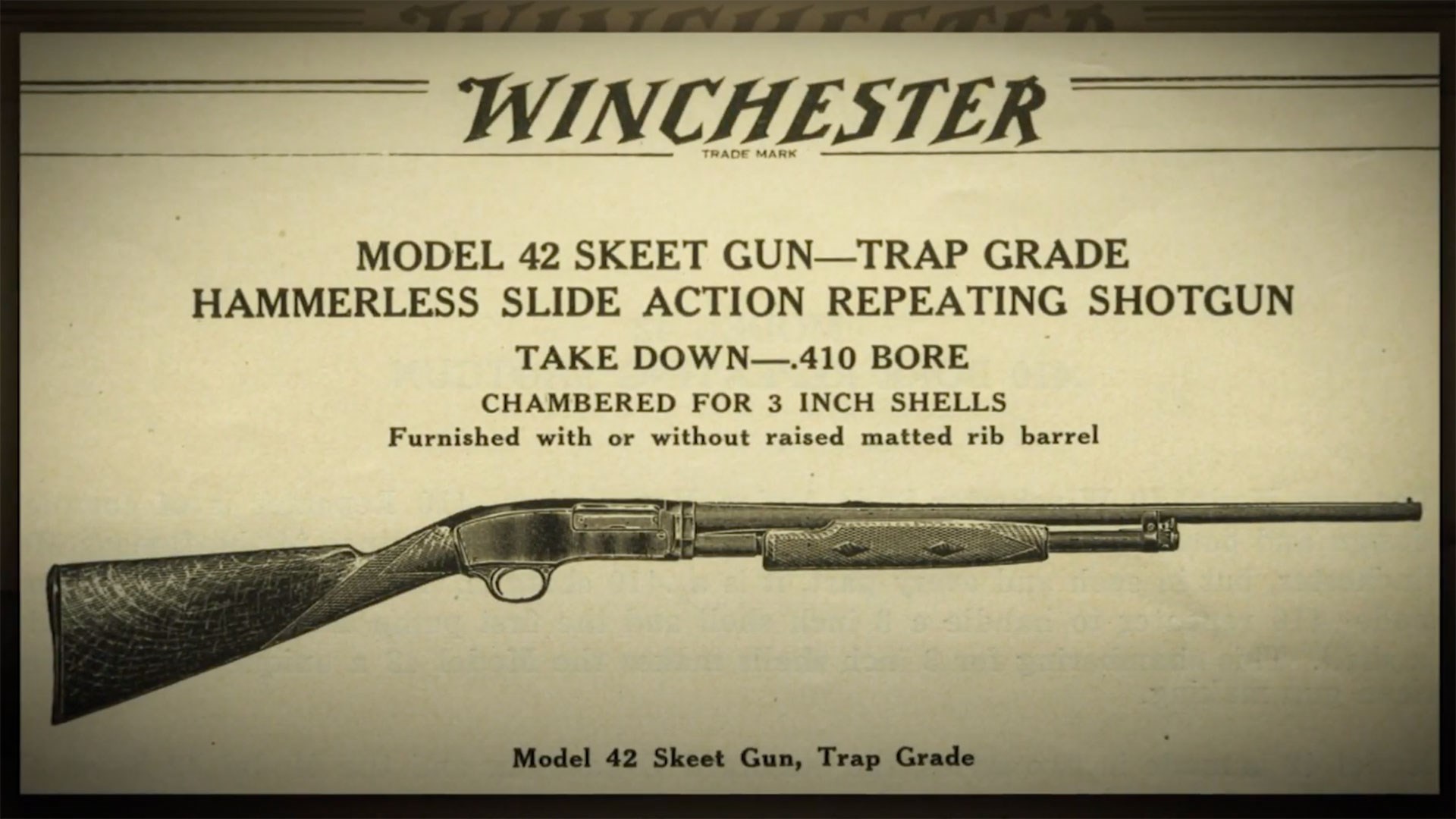
There are select .410 slug options for deer hunters, but because of slug weight, their range is limited.
The .410 is not a widely popular personal defense choice, but like deer slugs, there are some options. Winchester’s PDX Defender includes a series of flat discs mixed with pellets. Hornady also has a unique shotshell that features a .41-caliber slug and two .35-caliber lead balls. There are also more conventional 00 buckshot loads available.
Read Next: The Best .410 Pump Shotguns
.410 Break-Action Shotguns
CZ Drake Over/Under Shotgun
CZ
From Browning and Beretta to bespoke English shotgun makers, there are countless manufacturers that continue to produce side-by-side and over/under .410s. Prices run the gamut from well under $1,000 (if you buy a CZ or Stevens 555), into the tens of thousands (if you buy from Holland & Holland or Westley Richards & Co.). Their purpose is mainly for clay shooting (skeet and sporting clays), but you will also see the .410s come out during dove and upland bird seasons when very accurate shooters want to challenge themselves. It’s also not uncommon for .410 double guns to be used during gun dog training or field trials.
Screw-in chokes have made the .410 more adaptable for all of these pursuits. Choke is important when shooting any bore diameter, but particularly so for the .410 because of the finite number of pellets within each load. I have shot enough rounds of skeet (poorly) with a fixed choke .410 to appreciate the adaptability of removable choke tubes.
The ability to open and constrict the pattern at different skeet stations (due to shot distance) can improve your score markedly. For instance, on stations 1, 7, or 8 shooting two cylinder chokes is ideal, because those shots are often inside 15 yards, if not closer. But at station 4, improved cylinder or improved modified are typically better because the shot is over 20 yards and the pattern is slightly more dense at distance. Choke comes into play more in sporting clays and hunting because the shooting angles and yardages vary. Of course, you have to pattern your gun on paper at specific yardages with the load you intend to shoot through different chokes to see how they print before hunting with them.
.410 Semi-Automatic Shotguns
Mossberg International SA Turkey Semi-Auto Shotgun
Mossberg
Until recently, there had been a scarcity of .410 semi-automatic shotguns in production. Remington built a .410 11-48, the gun that replaced the Model 11 (a replica of Browning’s Auto-5), in 1954. The famed Remington 1100 was also chambered in .410 in the 1960s. But few—if any—gunmakers delivered a .410 auto in the last decade until TriStar and Mossberg built the G2 and SA-410.
Smartly, both TriStar and Mossberg offer their guns in turkey models as the .410 has become widely popular amongst hunters who live in states where it’s legal to kill a spring tom with the diminutive caliber. TSS, made up of 95 percent tungsten and 5 percent nickel and iron, has made the .410 shotgun a more viable choice because of its 18.3 g/cc density. That allows shotshell makers to add more, smaller pellets to the payload. For instance, a No. 9 TSS pellet generates about the same amount of energy as a lead 5. Many 3-inch .410 TSS turkey loads have a 13/16 charge weight, which measures out to 294 No. 9 pellets. Traditional 3-inch 12-gauge lead 5s have a payload of 1¾ ounces (297 pellets). With TSS, turkey hunters can have the same pellet energy, range, and lethality with a .410 as they do with a 12-gauge (shooting lead), and without as much felt recoil.
Unconventional .410s
Taurus Judge Double-Action Revolver
Taurus
In 2006, Taurus popularized the shotgun-pistol with its Judge, a six-shot revolver chambered in .410 and .45 Long Colt. Pistols had been made with shotgun barrels previously, but none were as popular as the Judge, which comes in 10 different models. The revolver was so well accepted that Taurus extended the line with another model called the Public Defender. Other gun makers tried to capitalize on the phenomenon as well. Smith and Wesson had the Governor, and Magnum Research built a five-pound wheel gun called the Big Frame Revolver. Rossi also makes the Circuit Judge revolver, though it’s a long gun capable of shooting 3-inch .410 shells and .45 Colt. Squirrel hunters will love this firearm, though you should check with your state game agency to make sure its legal to hunt with.
Henry .410 Side Gate Lever-Action Shotgun
Henry
Henry Repeating Arms is well known for its lever-action rifles and used that same design in creating .410, lever-action shotguns. Their main use is for keeping your garden clear of vermin, but you could hunt small game with this six-shot gun so long as you buy an aftermarket magazine plug (many states limit repeating shotguns to three shots). Chiappa, Century Arms, and TriStar are manufacturing lever shotguns as well.
The .410 shotgun can also be used as a survival tool. Several companies produce double-barrel break-actions chambered in .22 LR or .22 WMR and .410. Typically, the top barrel is reserved for the rimfire cartridge and the bottom barrel for the shotshell. A few of these firearms are built to be packable, so you don’t have to carry them in hand on hikes into the backcountry. Chiappa’s Double Badger folds in half so it is less cumbersome and the Savage Model 42 is a takedown that separates into two pieces with the push of a button.
Final Thoughts on the 410 Shotgun
Most folks see the .410 as a niche shotgun, but it actually can be a multi-purpose firearm if you buy the right model. There are several modern .410s (Mossberg’s 500 and the Remington 870 come to mind) that you could use for clays, a variety of hunting pursuits, plinking, and pest control. The .410 has evolved into more than a shotgun “just for experts” or a kid’s first firearm—though, it can serve both purposes equally. The most important thing to remember about the .410 is that it’s infinitely fun to shoot. Add one to your gun closet and you’ll find all sorts of uses for it.
The post 410 Shotgun: Everything You Need to Know About the .410-Bore appeared first on Outdoor Life.
Articles may contain affiliate links which enable us to share in the revenue of any purchases made.

